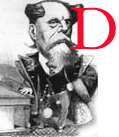 ' references to such moral children's tales as Sandford and Merton indicate that, in his mind, there was no serious distinction between adult and adolescent morality, and that, like his acquaintance, Hans Christian Andersen, he used one to reinforce the other. . . . [At times] the fairy tale is of structural importance, as the Cinderella fable is for Great Expectations. Pip starts his career in a low state before a forge (if not a hearth), and, by the aid of a supposed fairy godmother, achieves a high station. Because Dickens means to convert the fable to a Christian purpose, Pip must relinquish the glass slipper of pride (a showy, but impractical item), and return to ordinary, but ennobled circumstances, freed from the fairy-tale illusions that have so long misled him. It is worth noting that Great Expectations is also a Christian tale, opening on Christmas eve, partly located in a manger-like forge, and progressing to a symbolic crucifixion (Pip's wounded hands, symbolic illness, and resurrection). The child's fairy tale has been merged with what Arnold described as the adult's fairy tale, and the models of Cinderella and Christ confused, with all the aesthetic fascination of the storybook figure, but also with the moral power of the divinity. Biblical parable and child's tale become coequal in instructive power, though both are subordinate to the secular and esthetic purposes of the novel. [p. 31]
' references to such moral children's tales as Sandford and Merton indicate that, in his mind, there was no serious distinction between adult and adolescent morality, and that, like his acquaintance, Hans Christian Andersen, he used one to reinforce the other. . . . [At times] the fairy tale is of structural importance, as the Cinderella fable is for Great Expectations. Pip starts his career in a low state before a forge (if not a hearth), and, by the aid of a supposed fairy godmother, achieves a high station. Because Dickens means to convert the fable to a Christian purpose, Pip must relinquish the glass slipper of pride (a showy, but impractical item), and return to ordinary, but ennobled circumstances, freed from the fairy-tale illusions that have so long misled him. It is worth noting that Great Expectations is also a Christian tale, opening on Christmas eve, partly located in a manger-like forge, and progressing to a symbolic crucifixion (Pip's wounded hands, symbolic illness, and resurrection). The child's fairy tale has been merged with what Arnold described as the adult's fairy tale, and the models of Cinderella and Christ confused, with all the aesthetic fascination of the storybook figure, but also with the moral power of the divinity. Biblical parable and child's tale become coequal in instructive power, though both are subordinate to the secular and esthetic purposes of the novel. [p. 31]
Is Dickens's combination of Christ and Cinderella religious or blasphemous? See if you can determine how Reed conducts his argument and what are the strong and weak points in it.
References
Reed, John R. Victorian Conventions. Athens, Ohio: Ohio University Press, 1975.
Last modified 1988